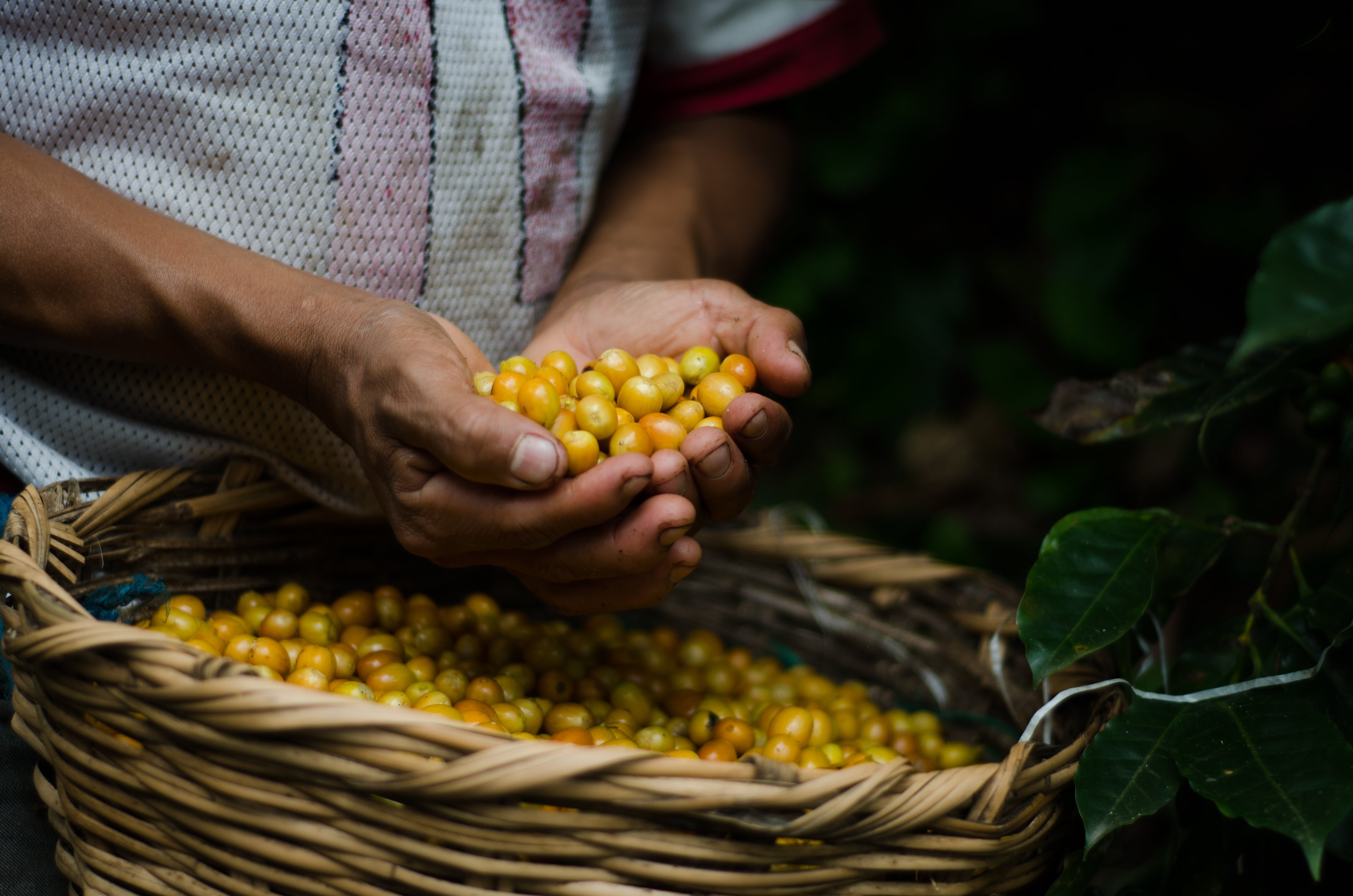
Better Together: How Hispanic Heritages have Influenced and Enriched the American Coffee Industry
The United States is often revered as being one of the greatest nations in the world.
And, one of the primary reasons we believe our country has long-received such recognition is due to the value other nations have poured into the heart of the USA.
But, have you ever considered just how essential, how necessary, how needful a variety of cultures and heritages are in making this nation as great as it is?
When I think of the contributions of other cultures and countries to the United States, those contributions (once again to reiterate) are needed, vital, and overwhelmingly enriching!
Here, we’d like to highlight a culture, a people, who have richly contributed to the United States, specifically those with Hispanic heritage.
For centuries, Hispanic Americans have uniquely, and amazingly added to what I would call the heart of the United States, shaping the history, culture, and success shared here.
So, today we’d like to explore and celebrate how the American coffee industry has been thus enriched and influenced by Hispanic heritages.
And, as you’ll soon find out, there’s absolutely no way to deny the rich Hispanic influence on American culture…through coffee!

Hispanic influences in the American coffee industry
Coffee is the most popular beverage in the world.
Globally, it is the second-most-exported commodity, trailing only oil.
Coffee is thought to have originated in Africa, though it is first said to have become popular in Europe, where the Spanish are then credited with introducing it to islands in the Caribbean in the early 1700’s.
Here, coffee production flourished and soon became the region’s primary agricultural export, even surpassing tobacco.
Unfortunately, in the late 1800’s the coffee industry in the Caribbean was negatively affected by the Spanish-American war.
But, overall production of coffee certainly didn’t take a hit, as both west and south of this area, in Central and South America, coffee production was just getting started!
Both from Spain’s introduction of coffee to the Caribbean islands, and through the export of coffee to Central and South American countries by the Dutch, the bean business began to flourish rapidly to the south of the United States.
How rapidly? What do we specifically mean by flourish?
By the mid 1800’s, Brazil became the most significant single country coffee producer in the world!
Today, coffee is grown in more than 70 tropical countries; however, Latin American countries produce the bulk of this beloved bean.
Just like real estate, this is due to location, location, location. Though, in reference to coffee production, it can better be referenced as region, region, region!
Arabica coffee varieties, the most popular varieties, thrive in warm, humid climates, and they grow best at altitudes of 4000-6000 feet, making Latin American countries prime for producing coffee.
In Mexico, Arabica is the most common coffee produced, with varieties like Typica, Bourbon, Caturra, and Mundo Novo being the most popular.
Though coffee production, as stated above, has diminished in the Caribbean islands, today this region primarily produces what are known as washed coffees.
Dominican coffee is noted for its heavy body, rich aromas, and earthy notes.
Haiti is one of the Caribbean islands that took a substantial hit in the 1800’s as far as coffee production is concerned. However, much of coffee history is rooted here, and what is produced here today is deliciously mellow, sweet, and low acid.
Jamaica is commonly known for its coffee that is grown in the famous Blue Mountain region, some of the rarest in the world, yielding overly desirable flavor profiles.
In Central and South America, the following countries are the biggest contributors to the American Coffee Industry:
The coffee market in Brazil has been known to influence the market globally. Most coffee produced here is grown at low altitudes with notes of bittersweet chocolate, with sweet and nutty flavors.
Colombian coffee is grown at higher altitudes, resulting in a caramel-like sweetness, though its acidity level tends to rank in the medium range.
Venezuela isn’t as big of a coffee producer as they once were, with oil being a bigger export today. But, what they still produce is most often enjoyed by espresso-lovers as their low acid coffee, with mild and delicate flavors and aromas, is considered a best option for straight espresso.
Costa Rican coffees are enjoyed by a wide variety of coffee connoisseurs as the flavors and aromas vary greatly depending on where the coffee is grown in the country.
Peru is home to a few rare, hard to obtain, coffee varieties that boast mild acidity, light body, and a unique vanilla-nutty sweetness.
And, as Spain offers a different climate than most Central and South American countries, coffee production here is limited, even exclusive, with premium Arabica offerings such as Geisha and Caturra, and a limited amount of Robusta varieties.
So, now I have a simple question for you…
Did you follow the trail of those bold printed words in this section?
Go back and give it a quick glance…
Those underlined countries are responsible for some of the most loved, enjoyed, and sought after coffees in the world!
That’s right, many, dare I say most of the coffee we enjoy here in the United States is grown in Hispanic nations.
And, obviously that isn’t an exhaustive list, as Lifeboost Coffee drinkers are well aware of the delicious coffee grown in the rainforest mountains of Nicaragua.
In the mountainous, rainforest terrain of Nicaragua knowledgeable minds and love-filled laboring hands pour their life’s work into your mug each day as our coffee farmers share their heritage, hard work, and expertise, sustainably growing specialty Arabica coffee plants for you to enjoy!

Hispanic influences in the coffee
Flavors and drinks we love
If you’ve been drinking coffee for long, you know that beans, water, and brewing methods are only the tip of the iceberg when it comes to enjoying a truly delicious cup of coffee.
Yes, we also have Hispanic influence to thank for some of America’s most tasty ways to enjoy a cup of joe!

Have you ever enjoyed an Espresso Mexicano?
This espresso-based favorite in Mexico has made its way to the states and is a must-try!
Think bold espresso mingled with Mexican hot chocolate, which boasts boldness and a bit of heat.
If you prefer your dessert and coffee combined into one mug, you’d enjoy the Cafe Bombon, compliments of Spain.
This coffee drink uses a one-to-one ratio of sweetened condensed milk and espresso.
Another Spanish favorite is the Cafe con Miel, featuring espresso, milk, and honey…absolutely delicious!
And, what about our coffee cocktail lovers?  One of the fastest growing coffee cocktail favorites here in the United States is the Spanish Carajillo.
One of the fastest growing coffee cocktail favorites here in the United States is the Spanish Carajillo.
This Spanish inspired drink is a staple in Mexico, incorporating espresso and Licor 43, with subtle flavors of both citrus and vanilla.
Originating in Latin America, the cortado is another exceptionally popular espresso drink here in the states.
To the untrained eye, a cortado may seem similar to a latte, but one sip highlights the rich espresso flavors in here, as this drink contains equal parts steamed milk and espresso, with little foam.

Mexican hot chocolate, horchata (typically a cinnamon-spiced rice milk), cinnamon, coconut, and dulce de leche are all Latin American flavors we know and love as staples when it comes to coffee-enhancing ingredients.
It’s easy to see that the latte landscape would be vastly different were it deprived of Hispanic influence!
Hispanic Heritage Salutations
The richness found in culture, life, and experience here in the United States is made possible through the variety of cultures, people, and heritages that make up this great land.
I would say these heritages are essential, necessary, even critical to who we are as a nation.
Together, these cultures, people, and histories combine to create a life we know and love.
And, from music to theater and television, from sports to fashion, politics, and cuisine, Hispanic heritage is a part of our everyday life and enrichment here in the United States.
As for coffee, that cup of joe that you enjoy…dare I say can’t live without…it is primarily made possible through the contributions to the United States (and the world) by a long lineage of coffee farmers in Hispanic nations.
Hispanic heritage is part of what has shaped America into the great land that it is today, and as you’ve seen above, it is a vital part of each mug, each sip, each roast, and latte that we know and love!
Even the Americano, the second most popular coffee drink ordered across the globe, could more accurately be called the Hispanic Americano, as without the Hispanic coffee contribution, there’d be no Americano in the first place!

Expressing our Gratitude
So, take a moment as you sip your delicious Lifeboost brew today to reflect on the amazing history and influences behind this beloved drink.
Here we recognize and express our gratitude, for without Hispanic Heritage, this crucial influence, one of America’s most loved commodities wouldn’t be possible.
Disclaimer: Beginning in 2025, Lifeboost Coffee primarily sources our coffee from farms in Honduras. Our practices of fair wages, sustainable growing methods-from shade to zero chemicals-all are still a part of our operations and are key to what makes our coffee health, delicious, and ethical. Only our farming locations have changed so that we can continue these ethical practices while also meeting our customer demands.
- https://sites.psu.edu/ajwcivicissues/2019/01/21/melting-pot-or-salad-bowl/
- https://www.researchgate.net/post/How-to-mix-two-or-more-materials-with-different-melting-point-for-metal-composites-What-is-the-process#
- https://worldpopulationreview.com/country-rankings/coffee-consumption-by-country
- https://britishcoffeeassociation.org/coffee-facts/
- https://www.wholelattelove.com/blogs/articles/coffee-growing-in-latin-america#
- https://sagebrushcoffee.com/blogs/education/history-of-latin-american-coffee
- https://jaimemontilla.com/coffee-industry
- https://soundsandcolours.com/subjects/travel/latin-america-coffee-history-explained-for-beginners-57280/
- https://coffeehunter.com/coffee-country/mexico/
- https://apps.fas.usda.gov/newgainapi/api/report/downloadreportbyfilename?filename=Coffee%20Annual_Mexico%20City_Mexico_5-31-2019.pdf
- https://perfectdailygrind.com/2021/02/breaking-down-caribbean-coffee-production/#
- https://coffeeaffection.com/why-is-jamaican-blue-mountain-coffee-so-expensive/#
- https://www.piccavey.com/spanish-coffee/#
- https://www.prnewswire.com/news-releases/the-carajillo-famous-in-mexico-is-now-one-of-the-fastest-growing-new-classic-cocktails-in-the-us-301135705.html
- https://coffeeaffection.com/cortado-vs-latte/
- https://hiplatina.com/latin-homemade-lattes/
- https://www.spanish.academy/blog/12-ways-hispanic-culture-is-changing-america/
- http://www.haleysdailyblog.com/10-most-popular-drinks-in-the-world/
- References for the article to confirm data and information.










